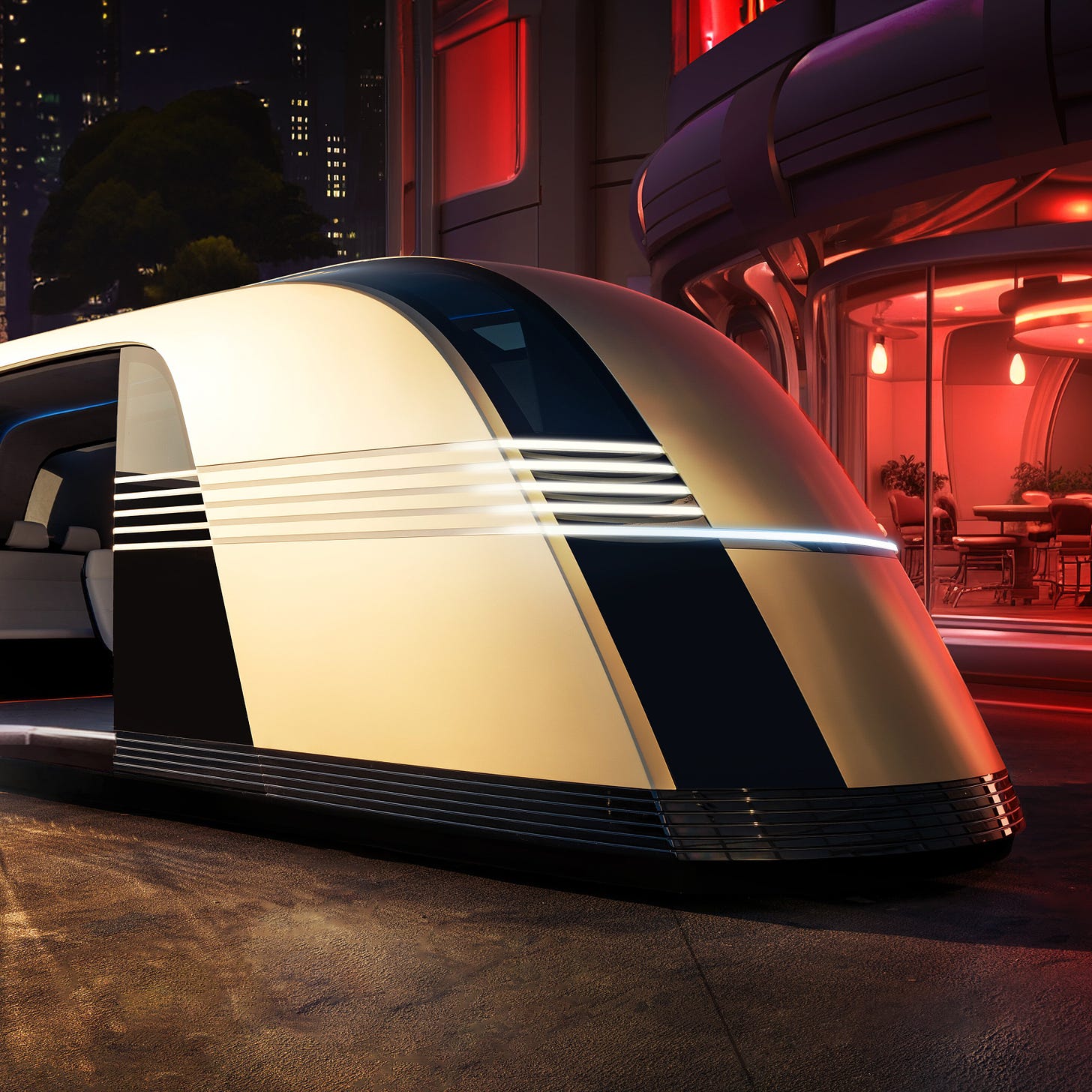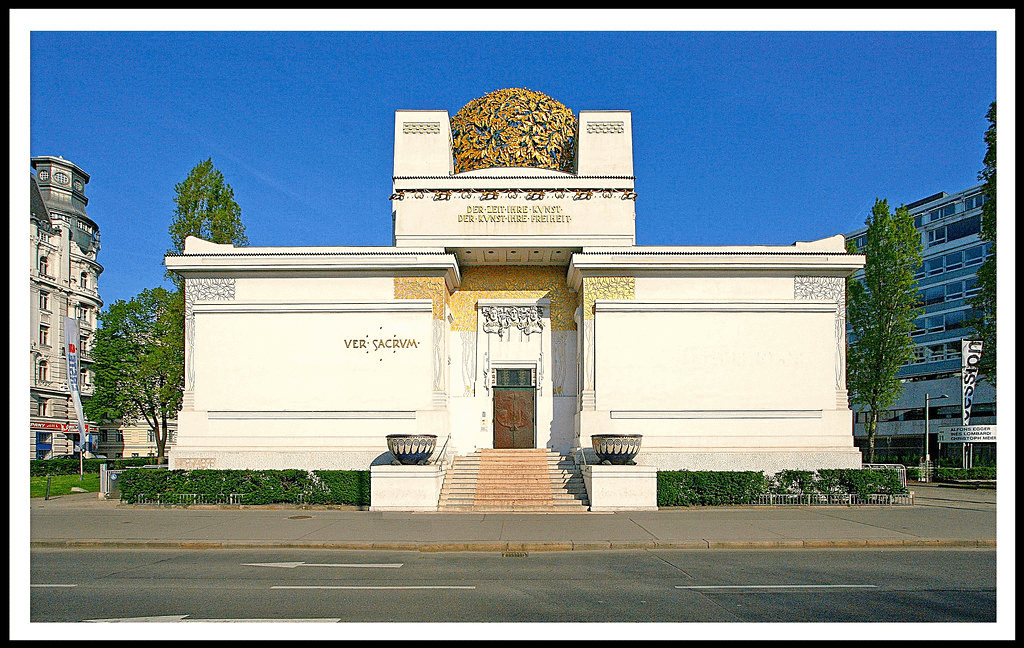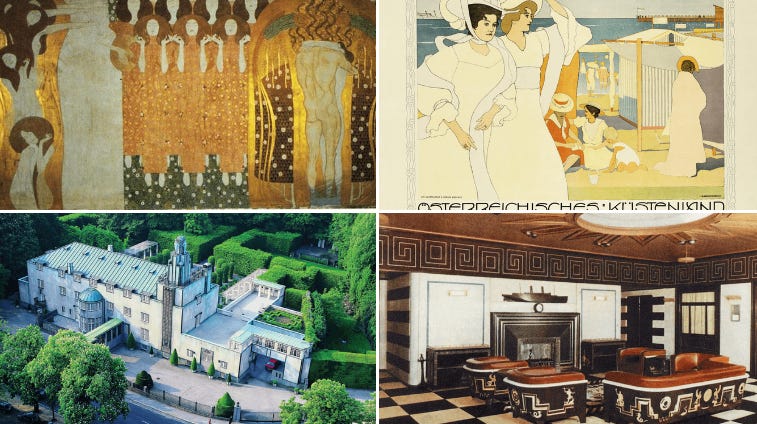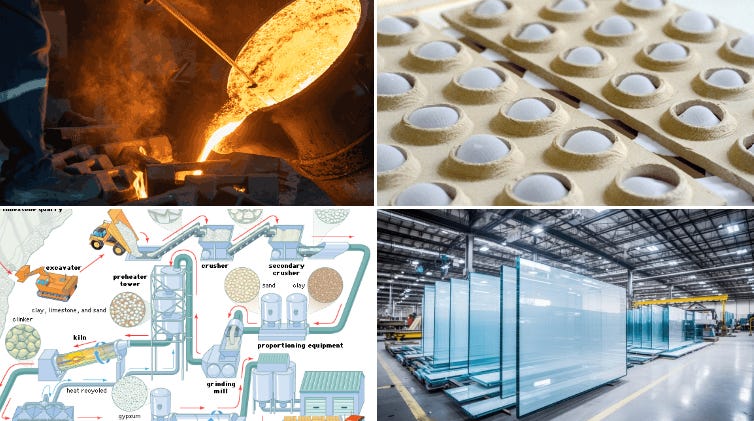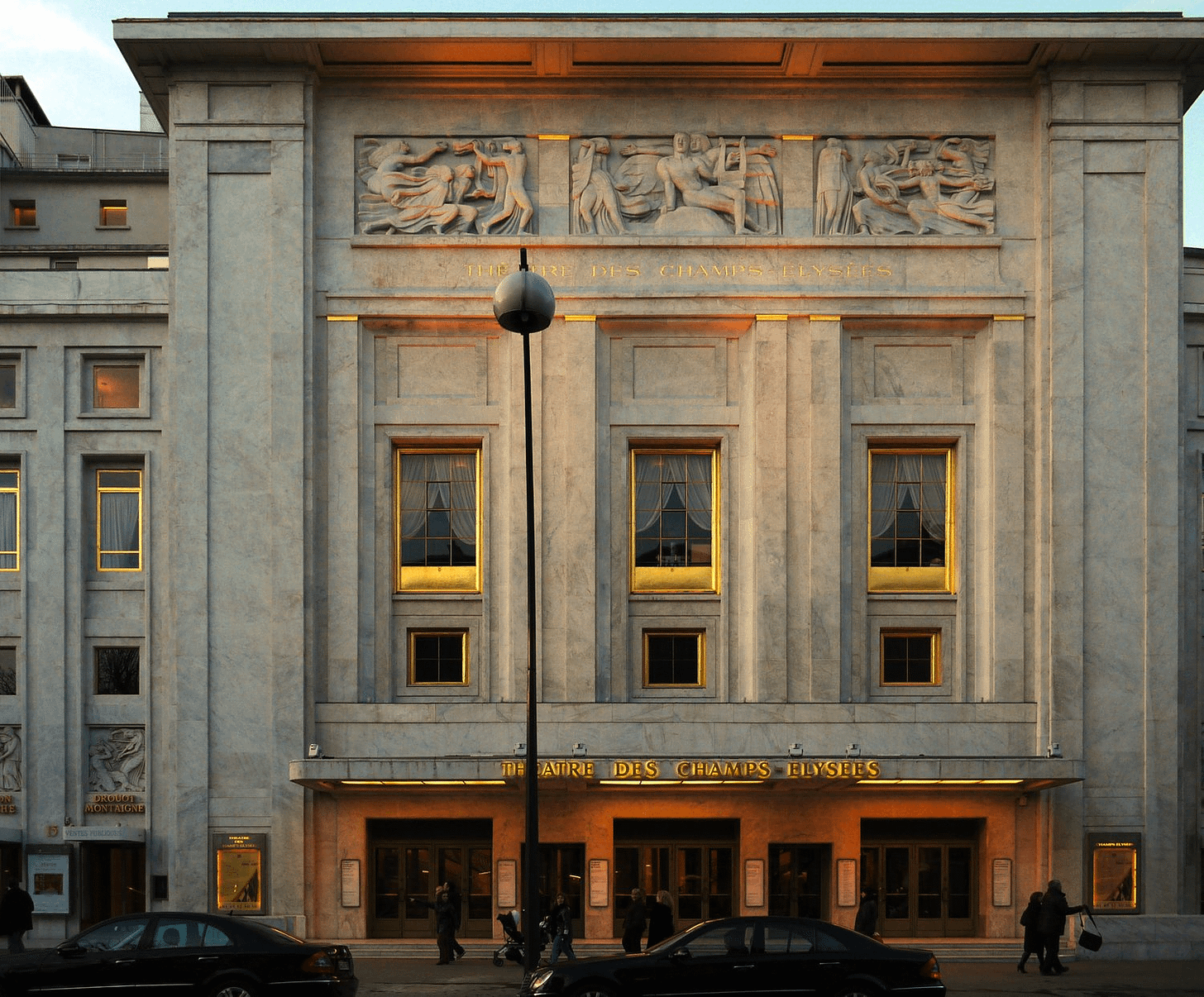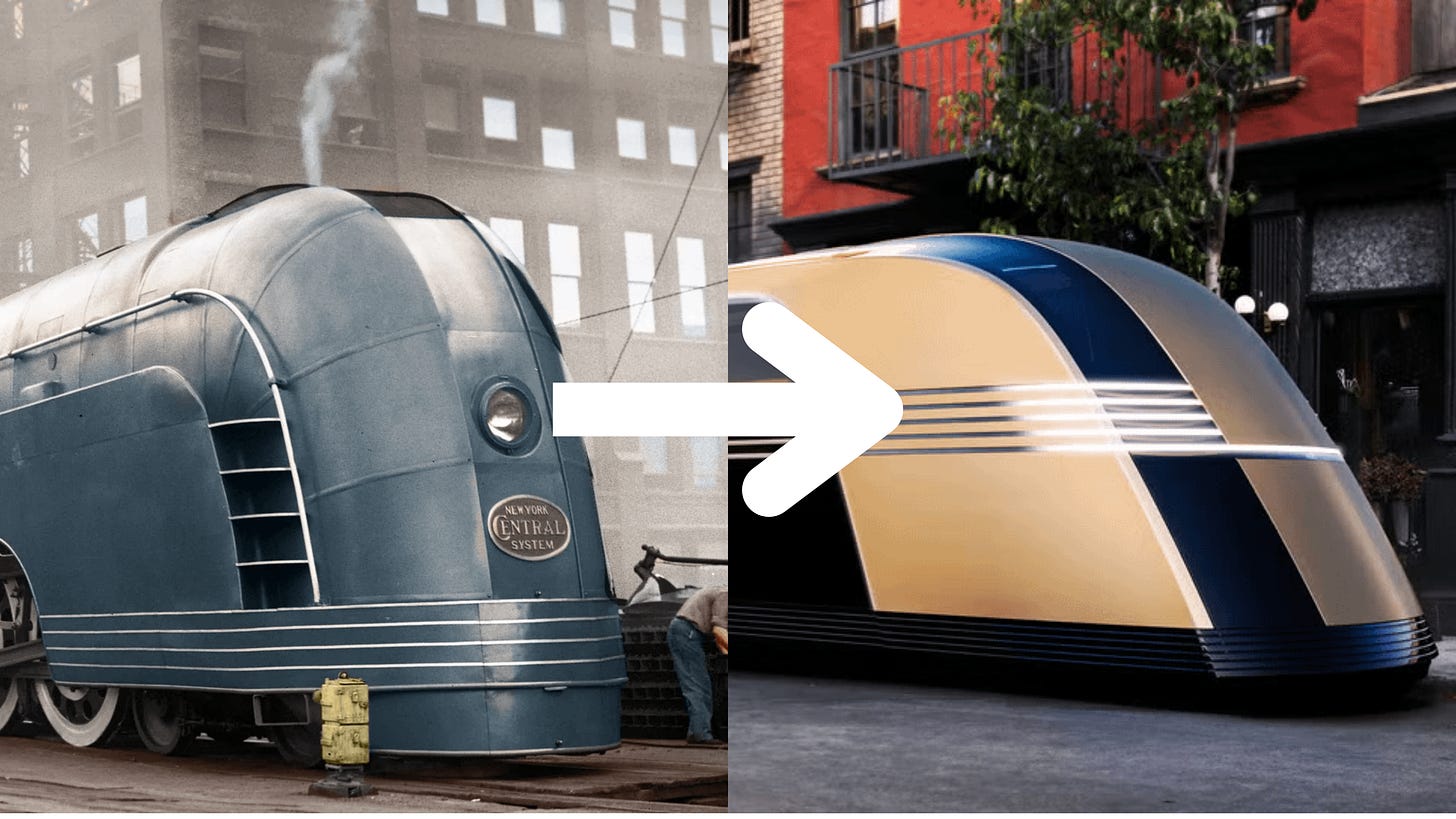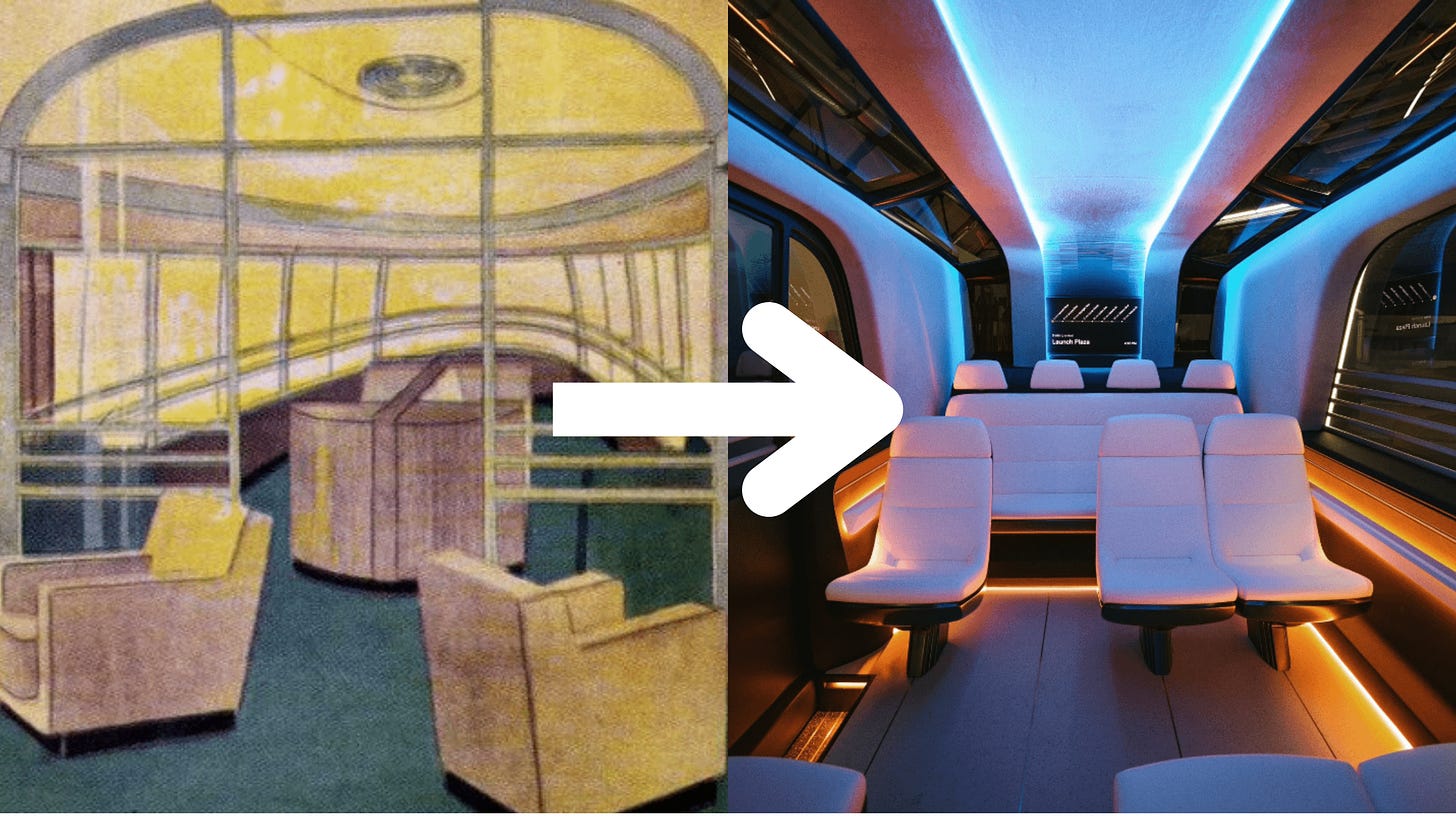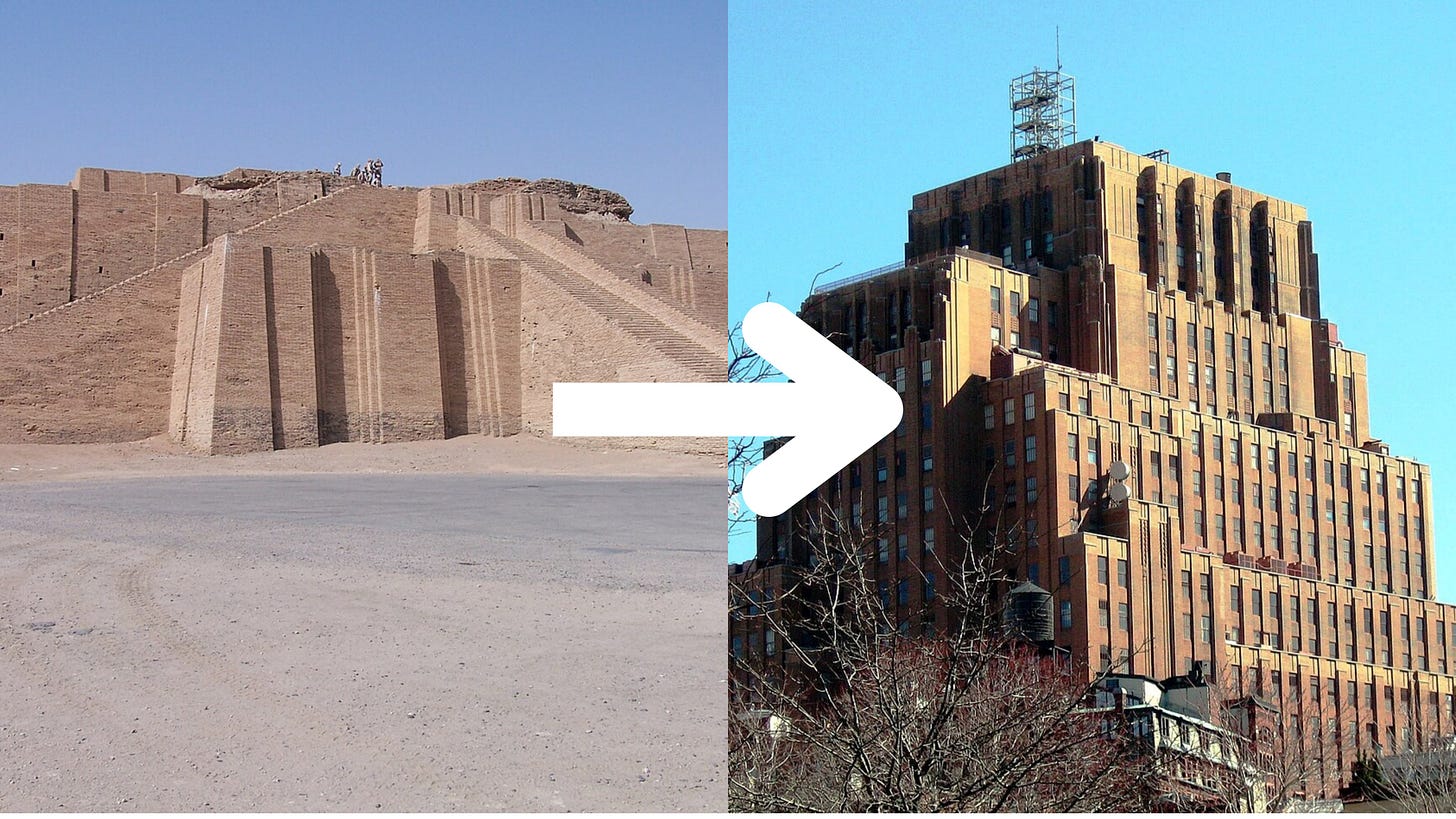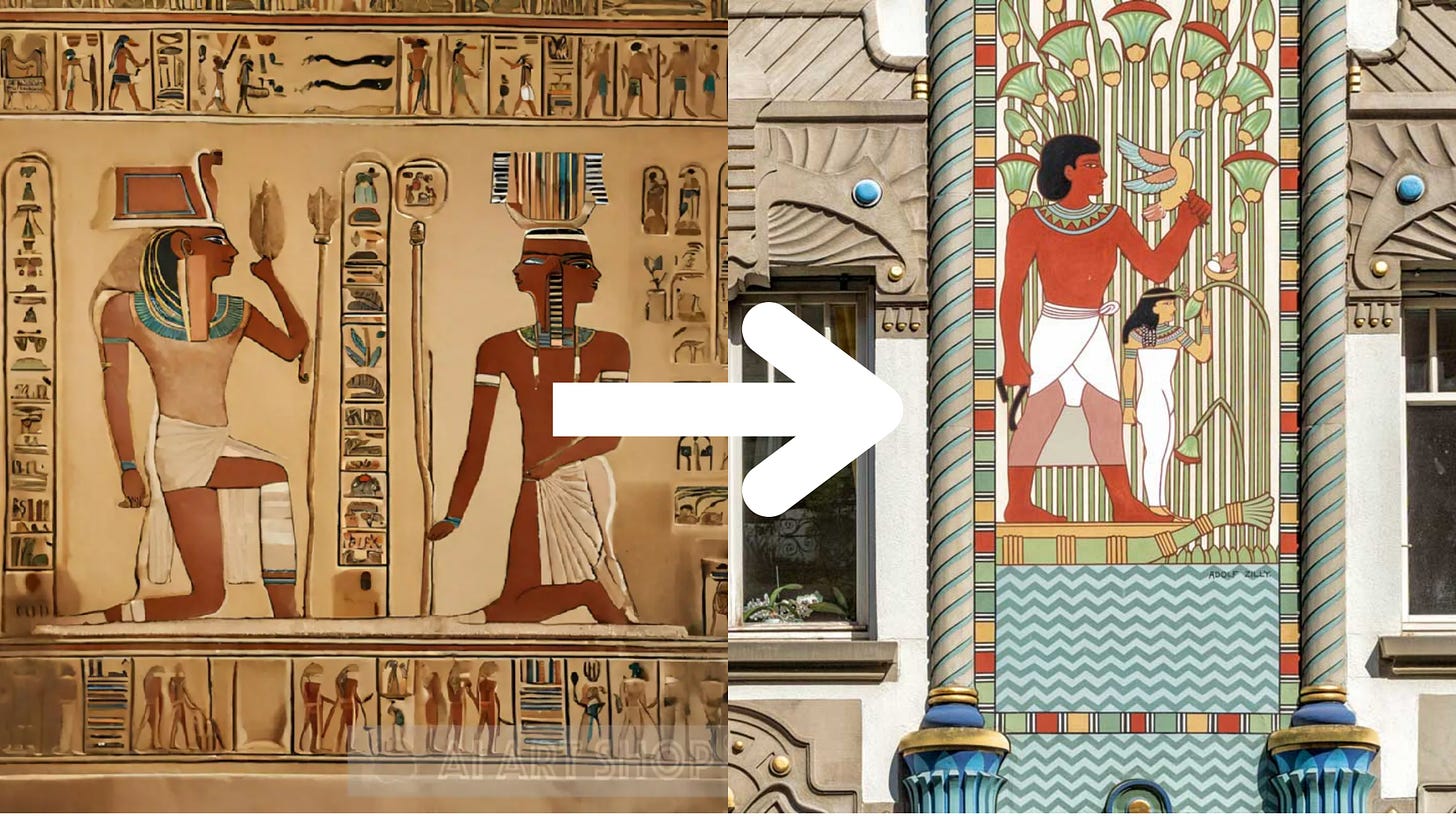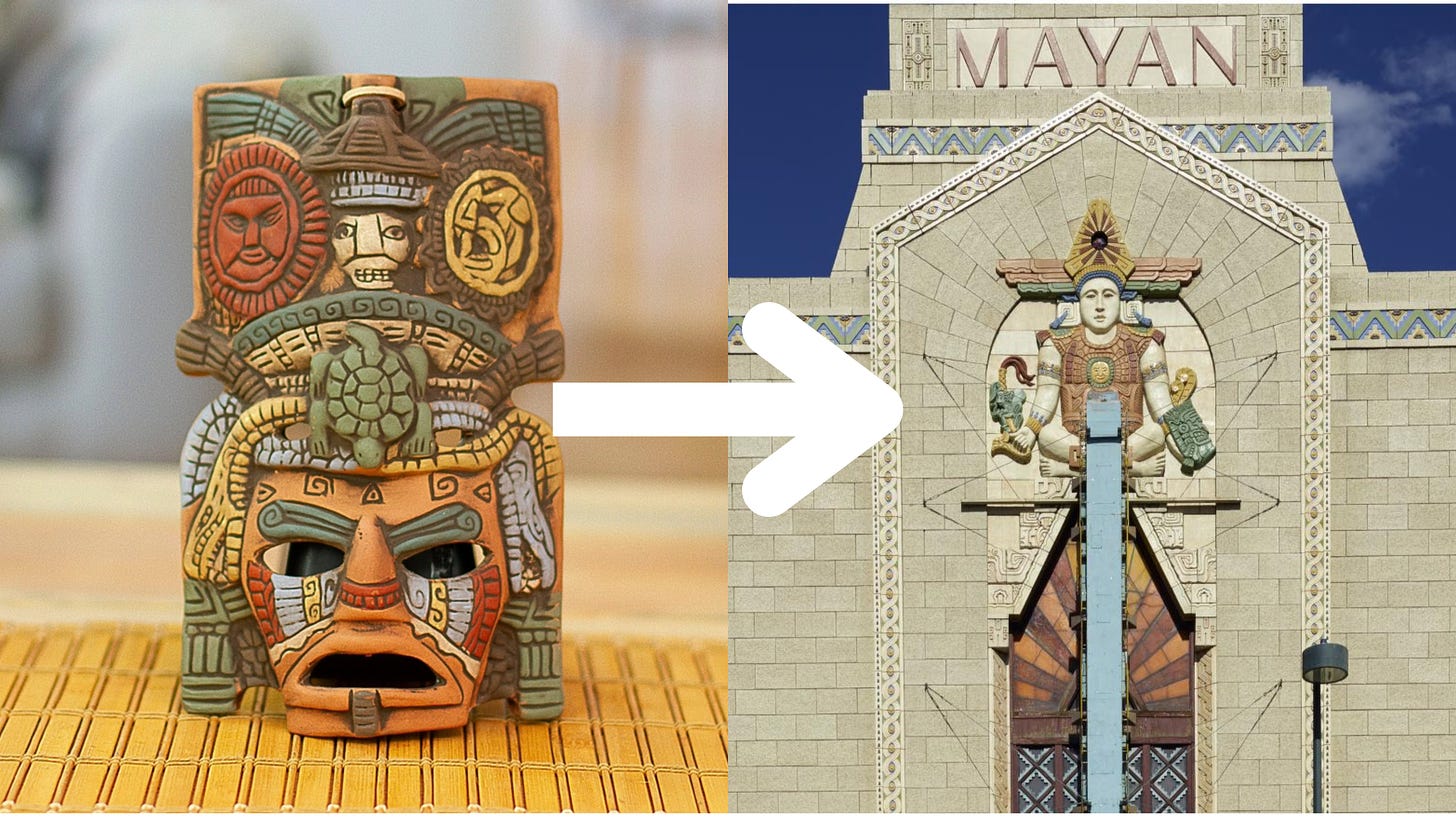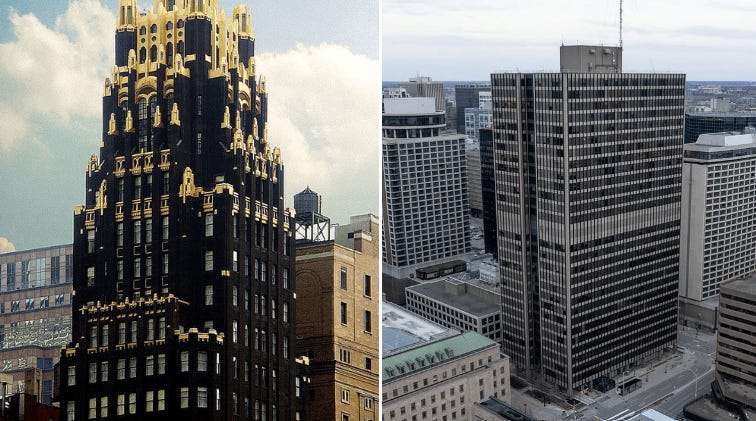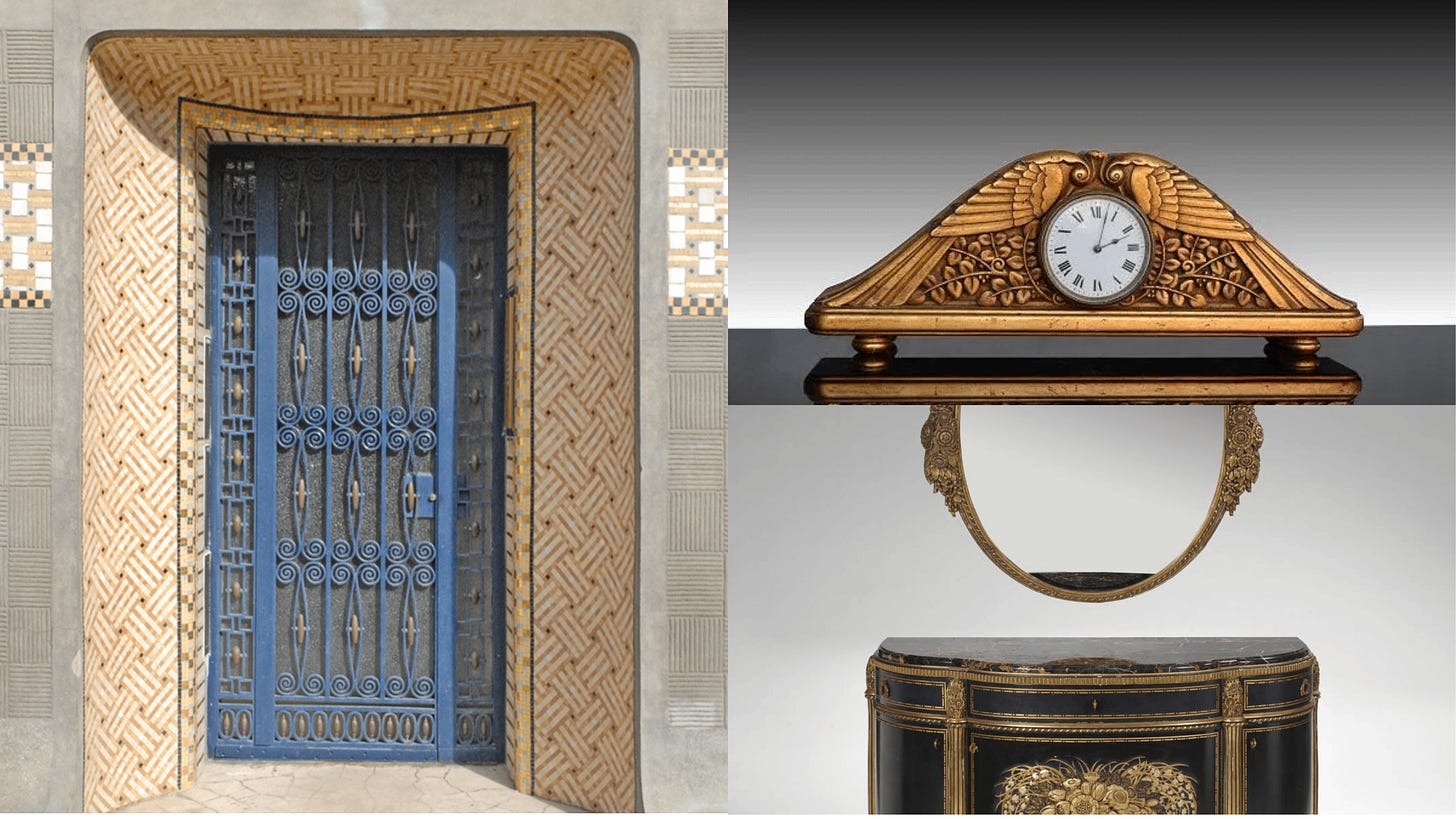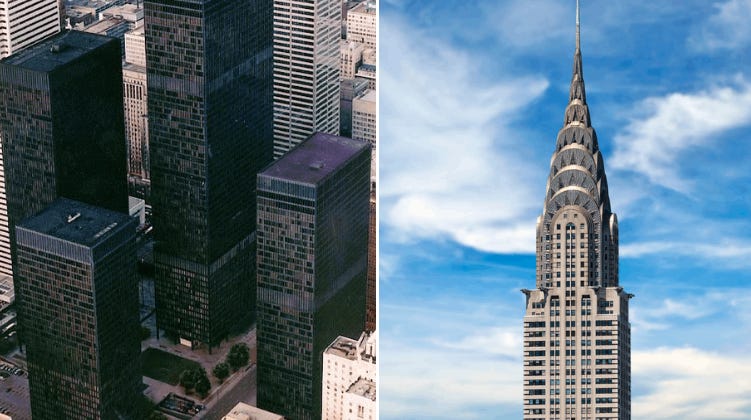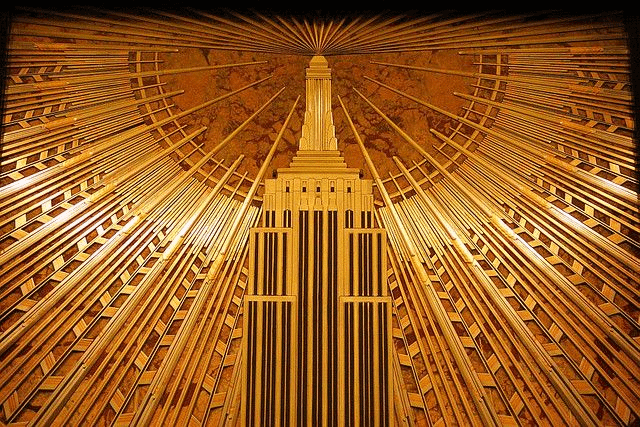On 10th Oct, Elon Musk unveiled the Robovan, and it was Art Deco.
Why is this dead 1920s movement making a comeback?
And who killed it in the first place?
This is an essay with all the answers…
Part I
Art Deco began with a breakup. Now called the "Vienna Secession," a bunch of visionaries resigned from the "Association of Austrian Artists" in 1897 to chart new territory. The hero's journey begins. Their first project was the "Secession Building" in Vienna. It’s still standing:
The Vienna Secession had painters (Klimt), advertisers (Josef Maria Auchentaller), architects ( Josef Hoffmann), and more. Their vision was to promote "Total Art," combining music, geometry, interior decor, architecture, painting, and other forms in dizzying new ways..
Man's increasing mastery over nature means architects have an ever-growing list of raw materials to choose from. This list particularly exploded after the Industrial Revolution - suddenly, you could smelt, manufacture, forge, melt, mold, and use completely novel materials..
And the Art Deco pioneers were upto this challenge. They showed that new materials were themselves neutral - they could be used in ways both ugly and beautiful. Perrett used reinforced concrete to build Théâtre des Champs-Élysées but covered it with ceramic. Strength and beauty.
Elon's Robovan (both on the inside and outside) is inspired by Henry Dreyfuss' Mercury, a 1930s Art Deco train that combined luxury with bold geometric silhouettes. But things get interesting here - Dreyfuss made futuristic designs while talking about learning from the past…
Part 2
Dreyfuss, Elon's inspiration for the Robovan, said in Designing for People: "To look ahead one must learn to look back." (1955)
And this wasn't just an empty truism - in Art Deco buildings we see Mesopotamian, Ancient Egyptian, and Mayan motifs modernized and brought to life…
And now we come close to the heart of the Art Deco movement: it was futuristic while having one eye in the back of its head. That was the secret to its genius. It embraced machines, new materials, and the future...while never forgetting the primal value of beauty.
Here's Dreyfuss explaining his humanist philosophy of design. If more designers think like this, the amount of built ugliness in the world will fall by 95%:
The products we design are going to be ridden in, sat upon, looked at, talked into, activated, operated, or in some way used by people individually or en masse. If the point of contact between the product and the people becomes a point of friction, then the industrial designer has failed. If, on the other hand, people are made safer, more comfortable, more eager to purchase, more efficient - or just plain happier - the industrial designer has succeeded...
Part 3
By 1925, Art Deco was under attack. Adolf Loos was calling all ornamentation a crime, Le Corbusier was redefining houses as "machines for living in," and the communists were spreading the gospel of equality. Suddenly Art Deco was too aristocratic, too indulgent, too optimistic.
The Art Deco loyalists tried to push back. Paul Follot wrote: "We know that man is never content with the indispensable and that the superfluous is always needed. If not, we would have to get rid of music, flowers, and perfumes!" He was right and yet his side lost...
Here are some of his designs:
Hermann Bahr, a novelist and art critic, wrote in 1898 that the Art Deco movement was not at a war with the "past." And it certainly wasn't just a debate over "aesthetics." Instead, the Art Deco movement was a "confrontation between two different spiritual states..."
The International Style was triumphant in the 20th century, but the 21st century may still belong to Art Deco...
Here's to soulful experimentation and an earnest search for beauty...
Thank you for reading!
If you enjoyed this essay, you can support my work in three ways:
Buy my ebook: Hit Reverse: New Ideas From Old Books
Buy my reprints of Notes on Democracy and The Great Gatsby - new editions of two classics, now available on Amazon…
Forward this essay to your friends!
And remember…




